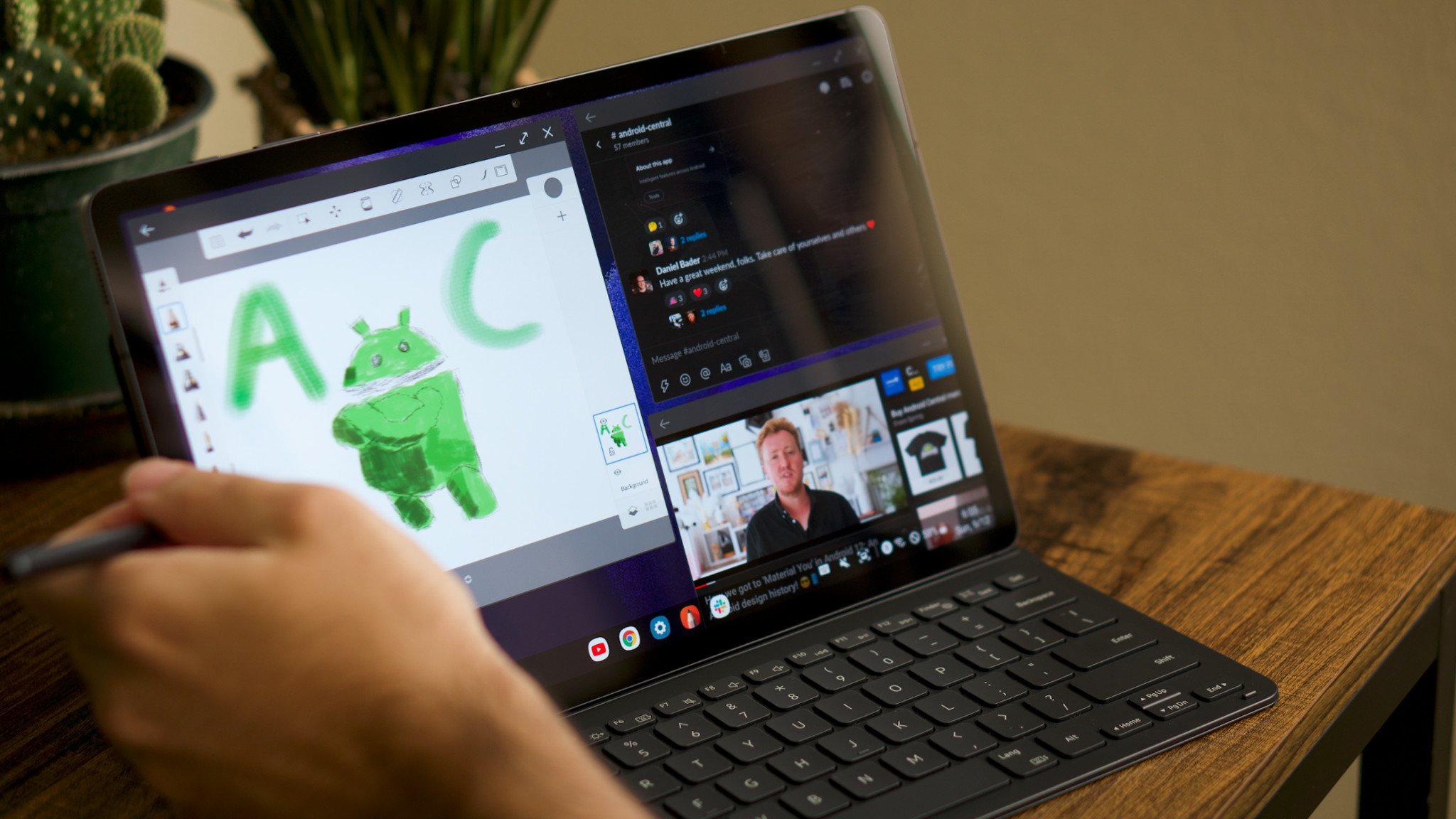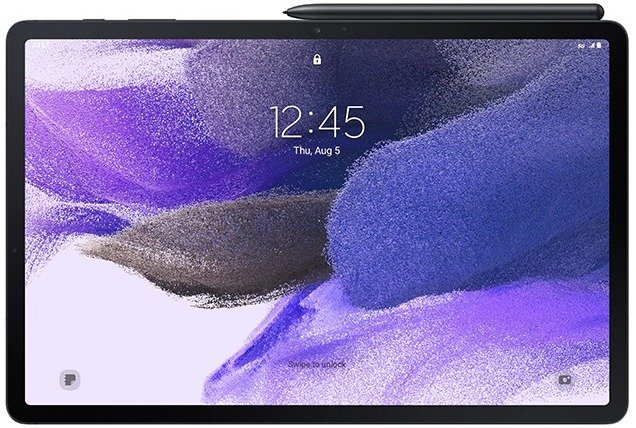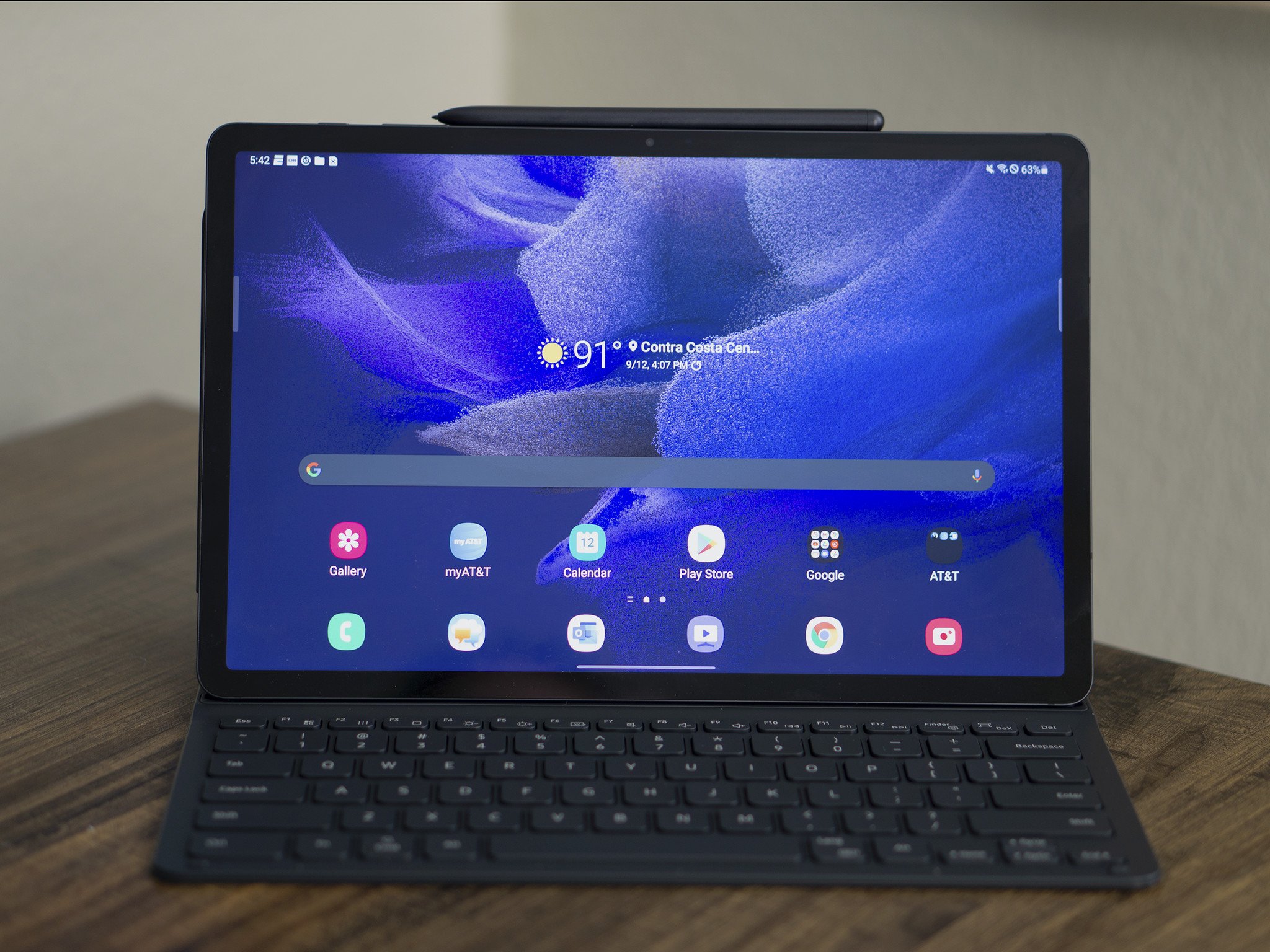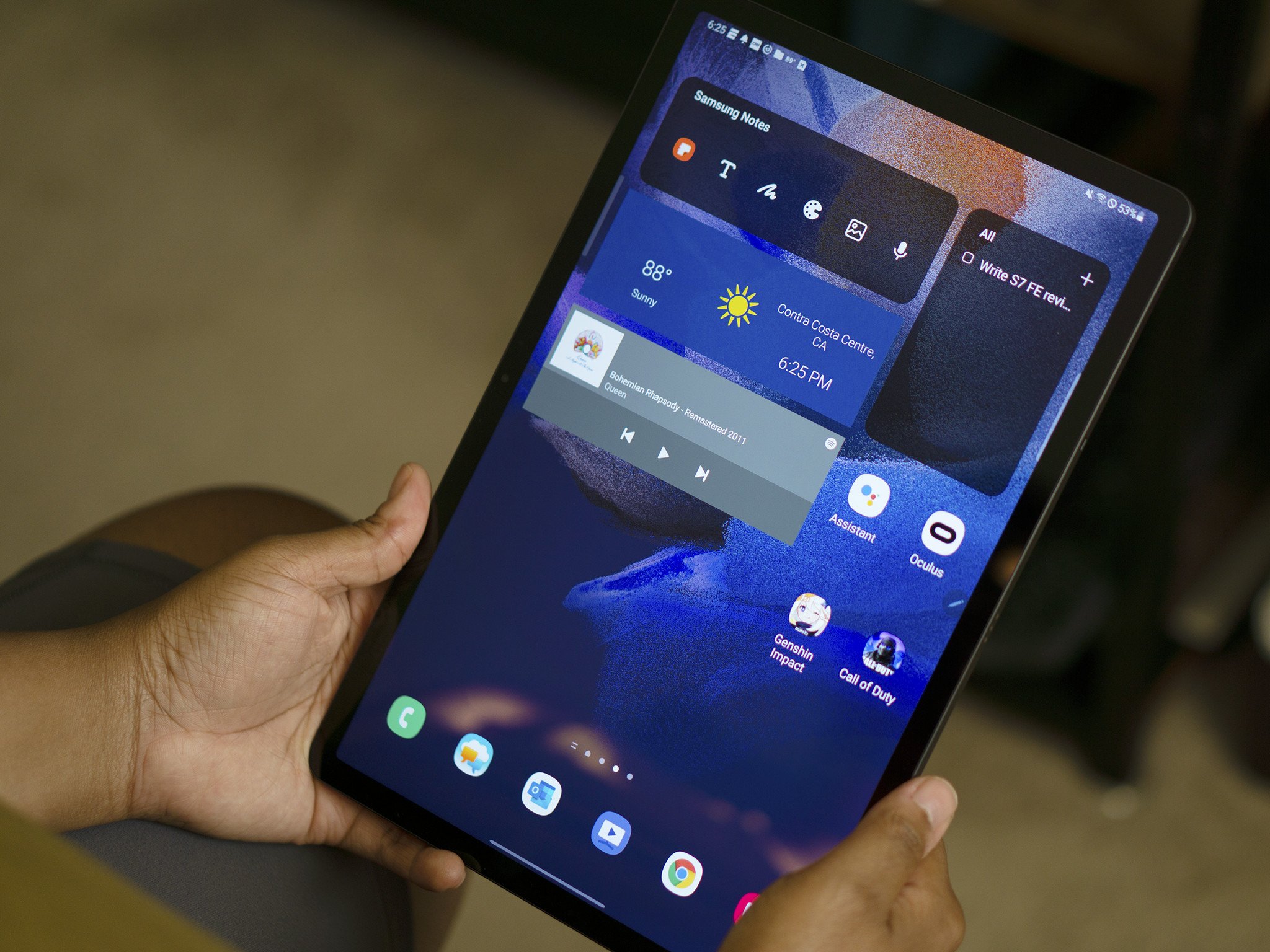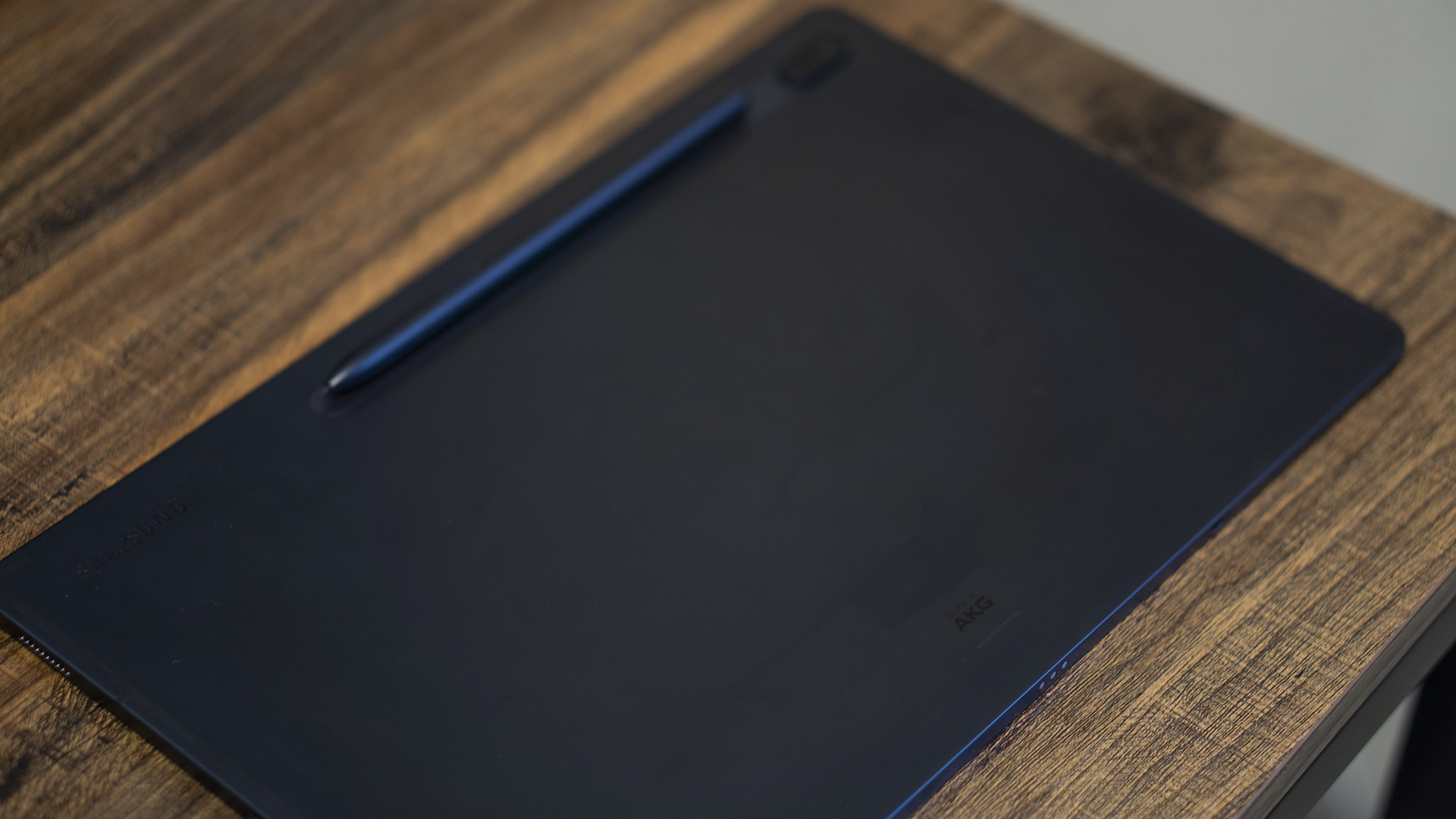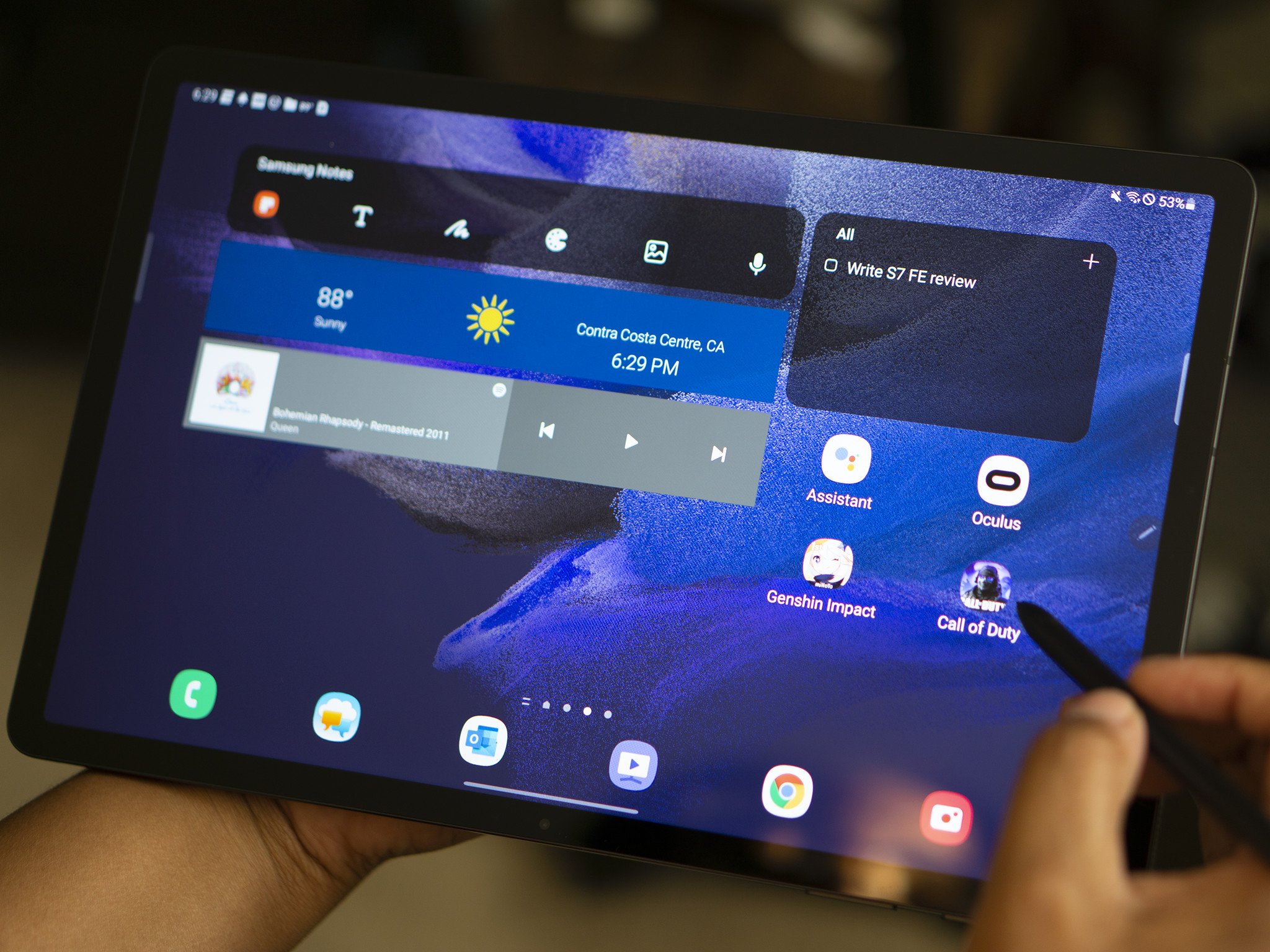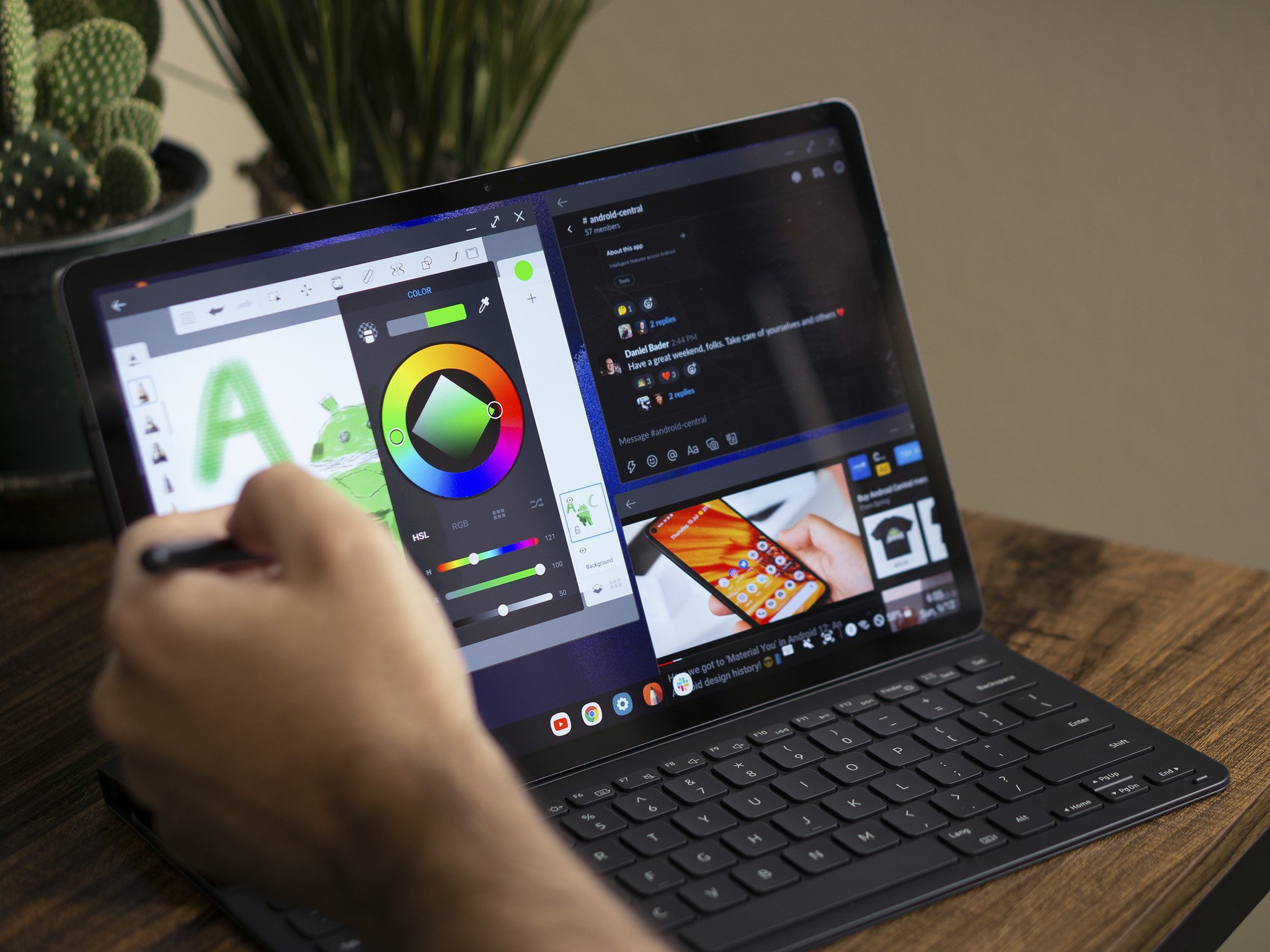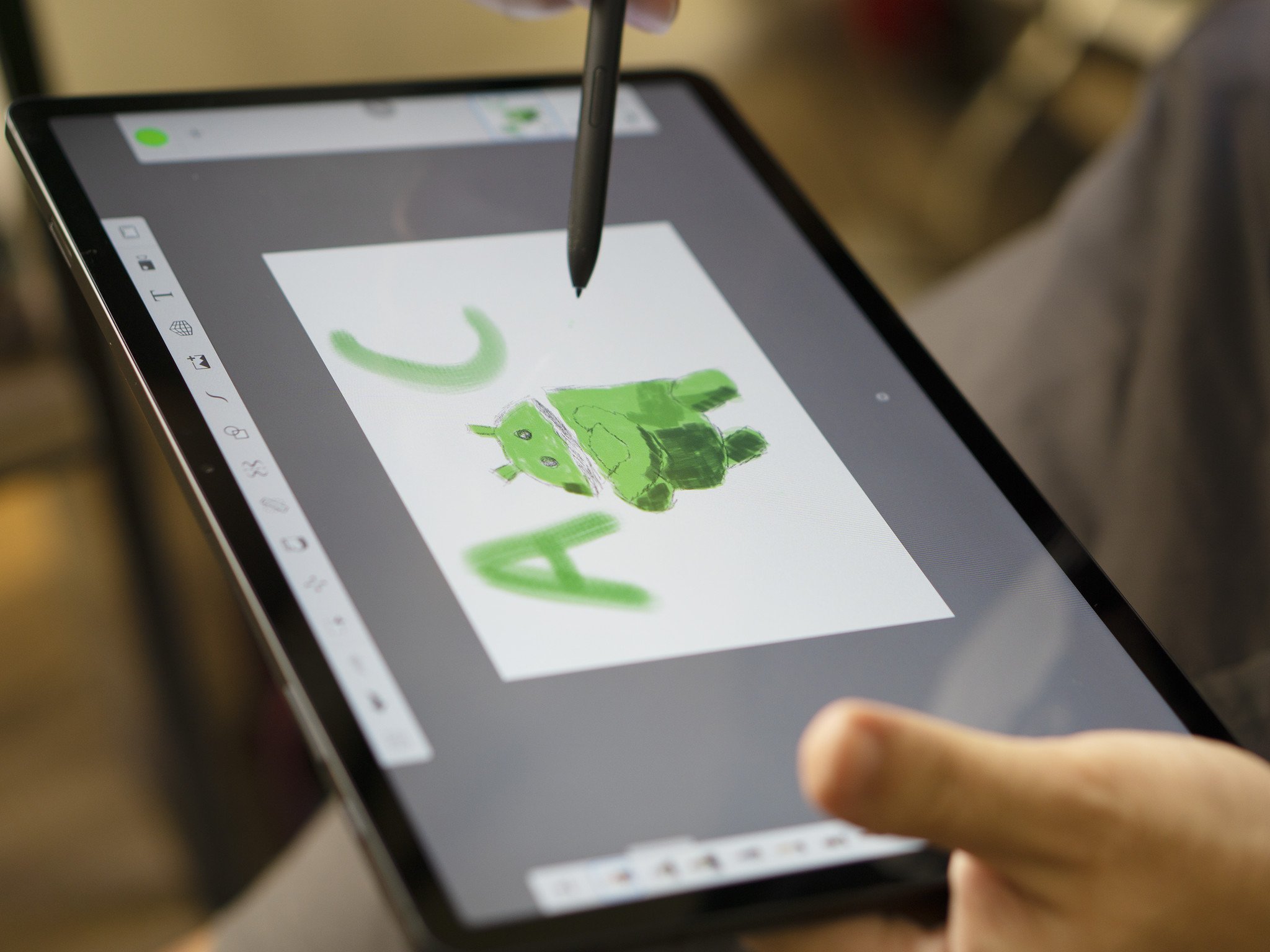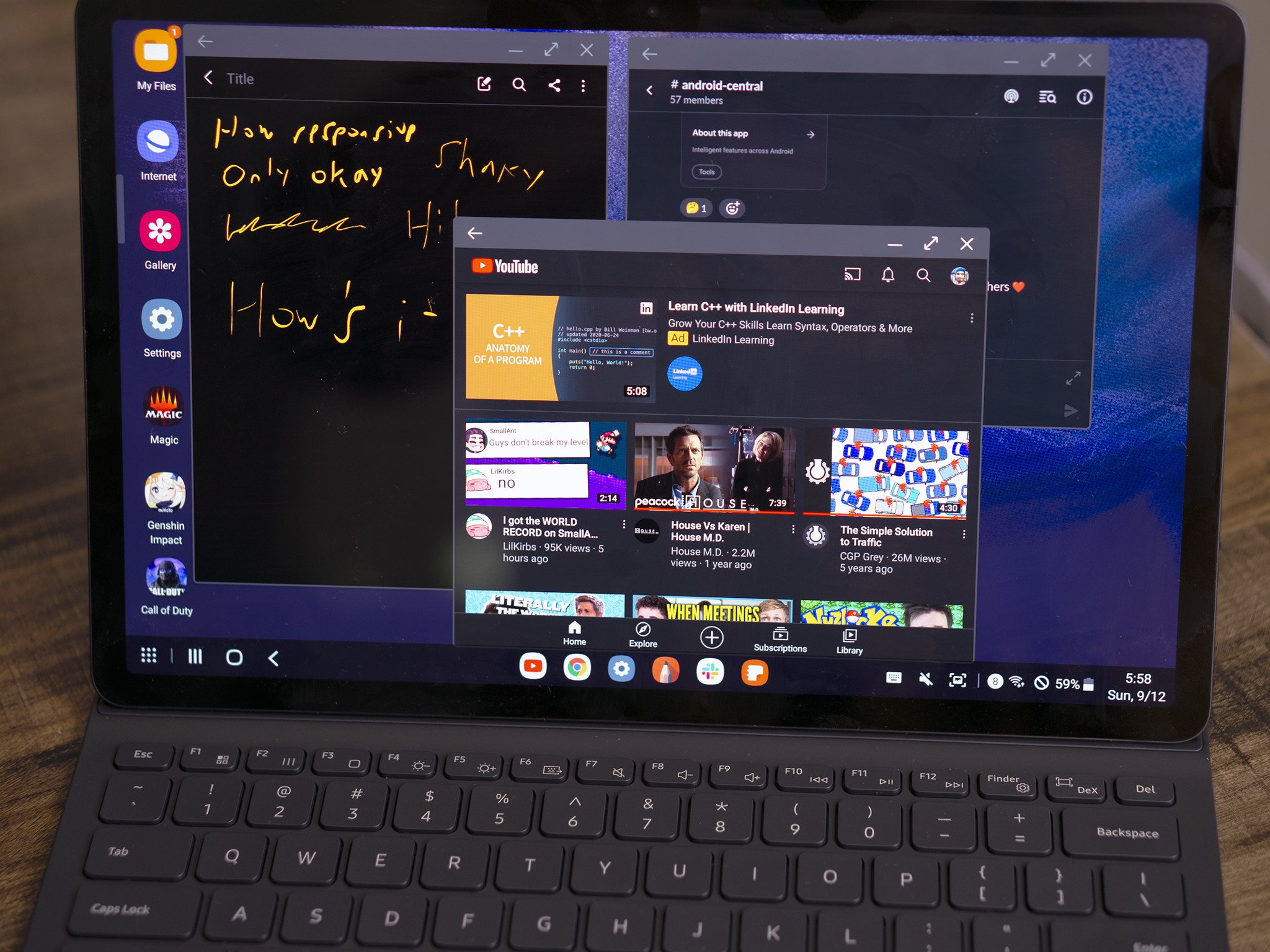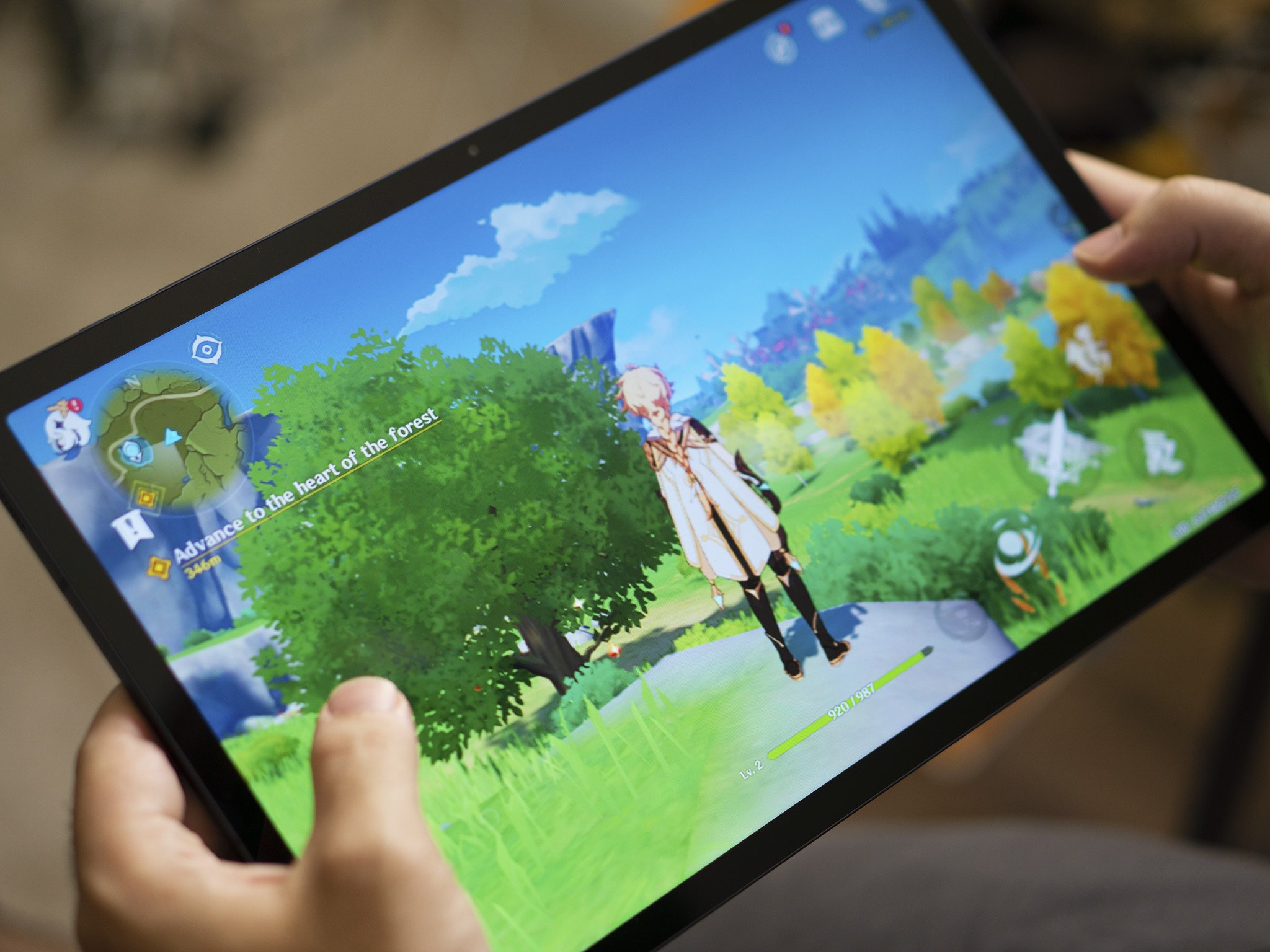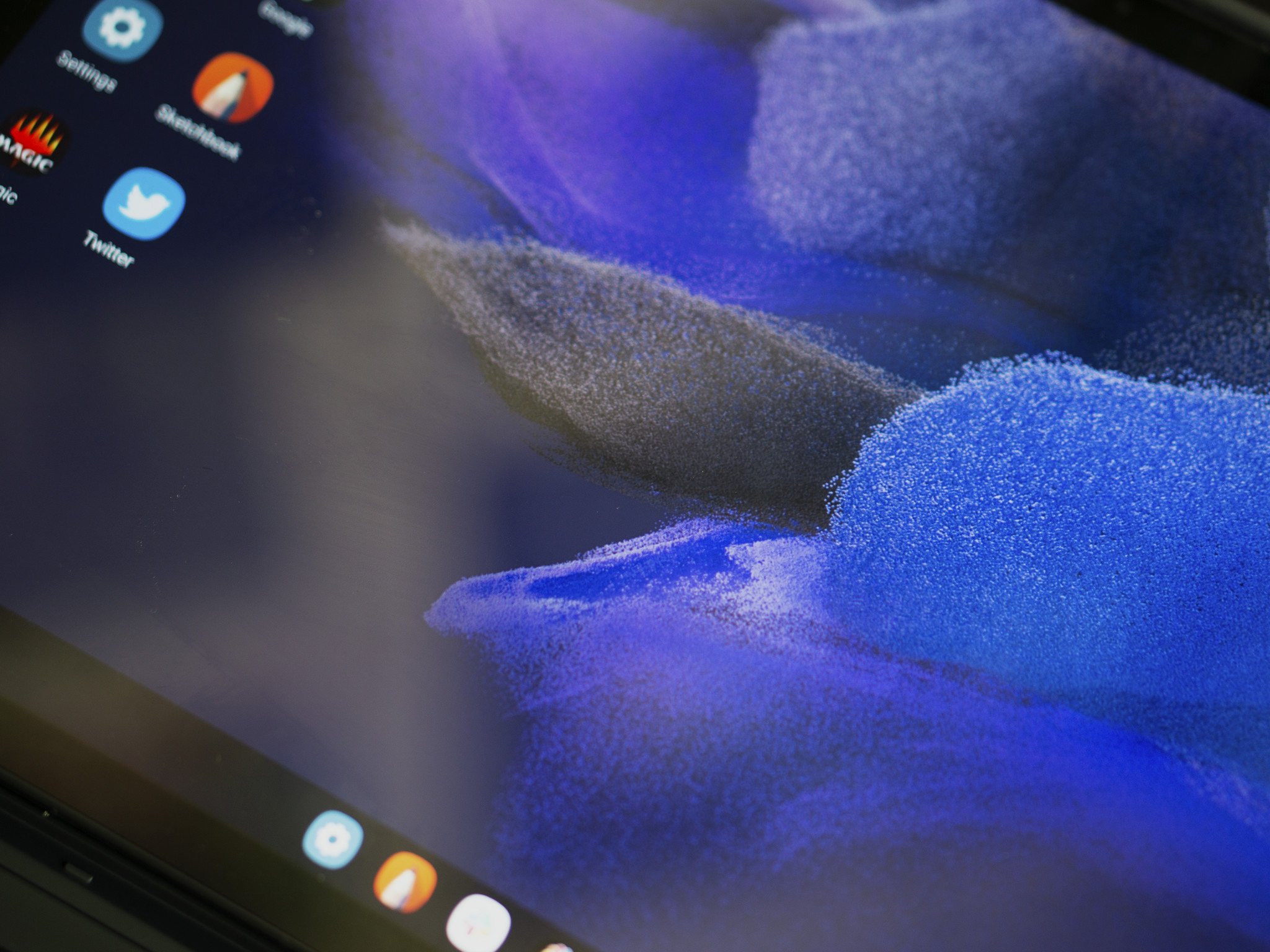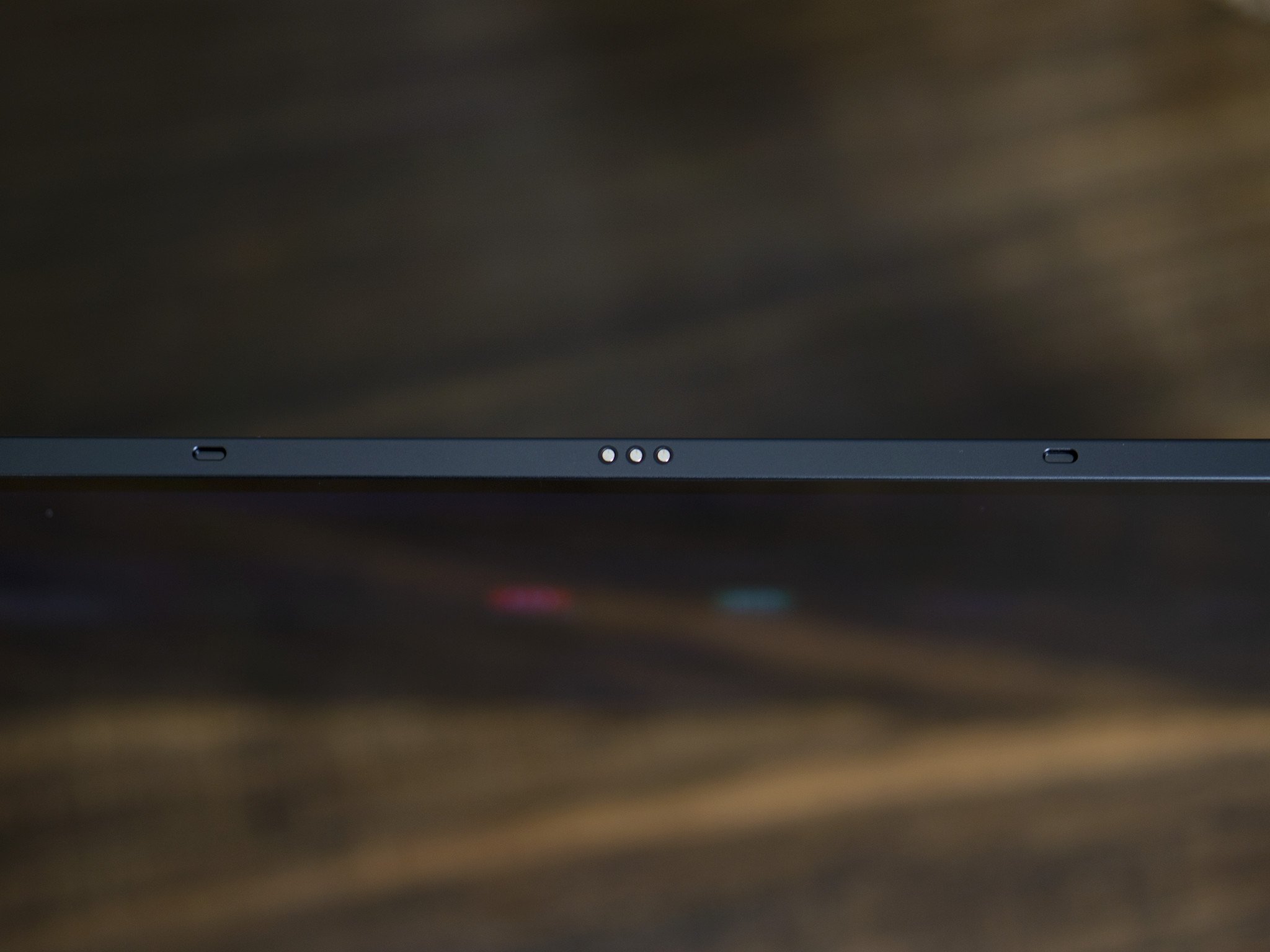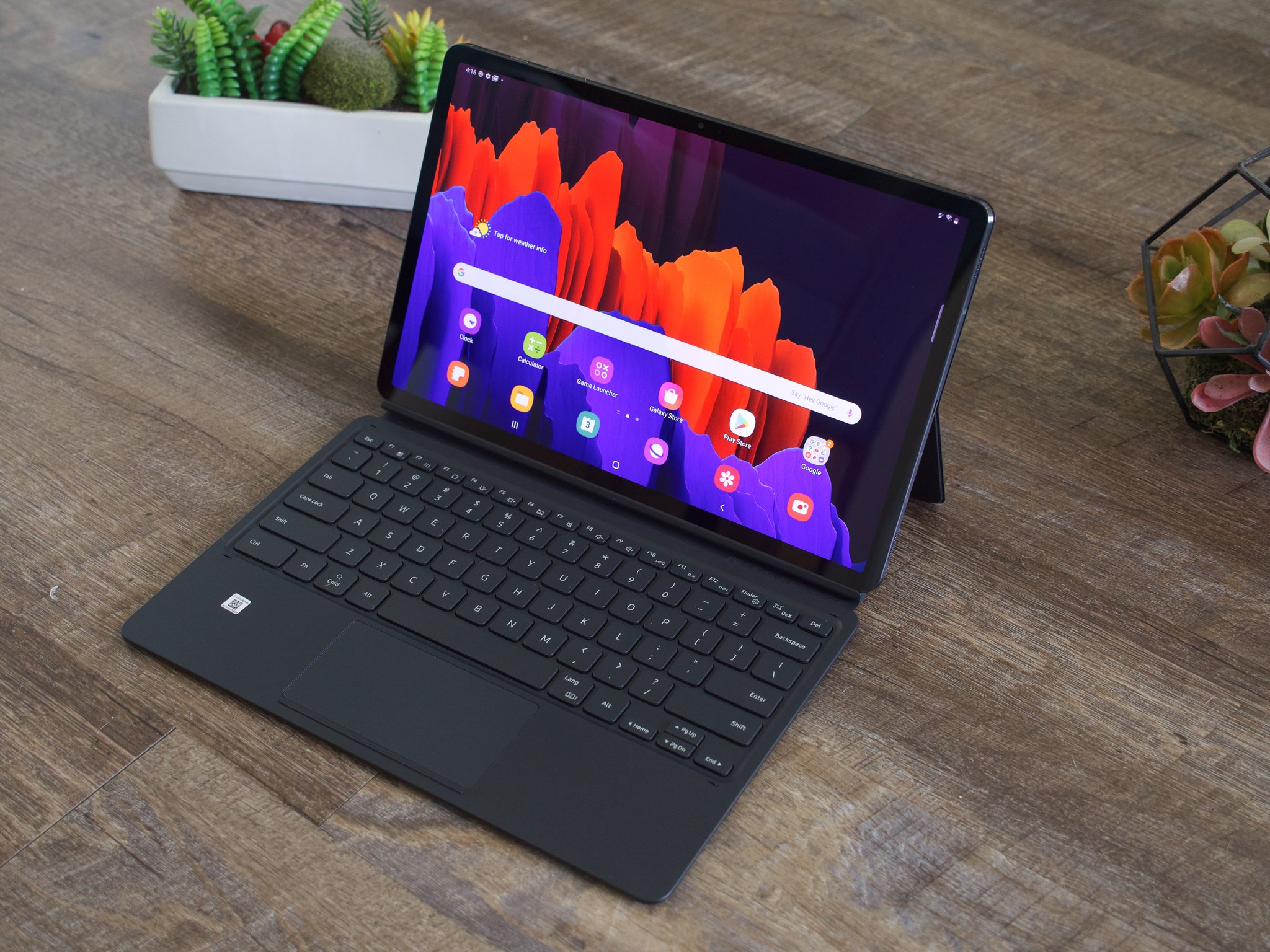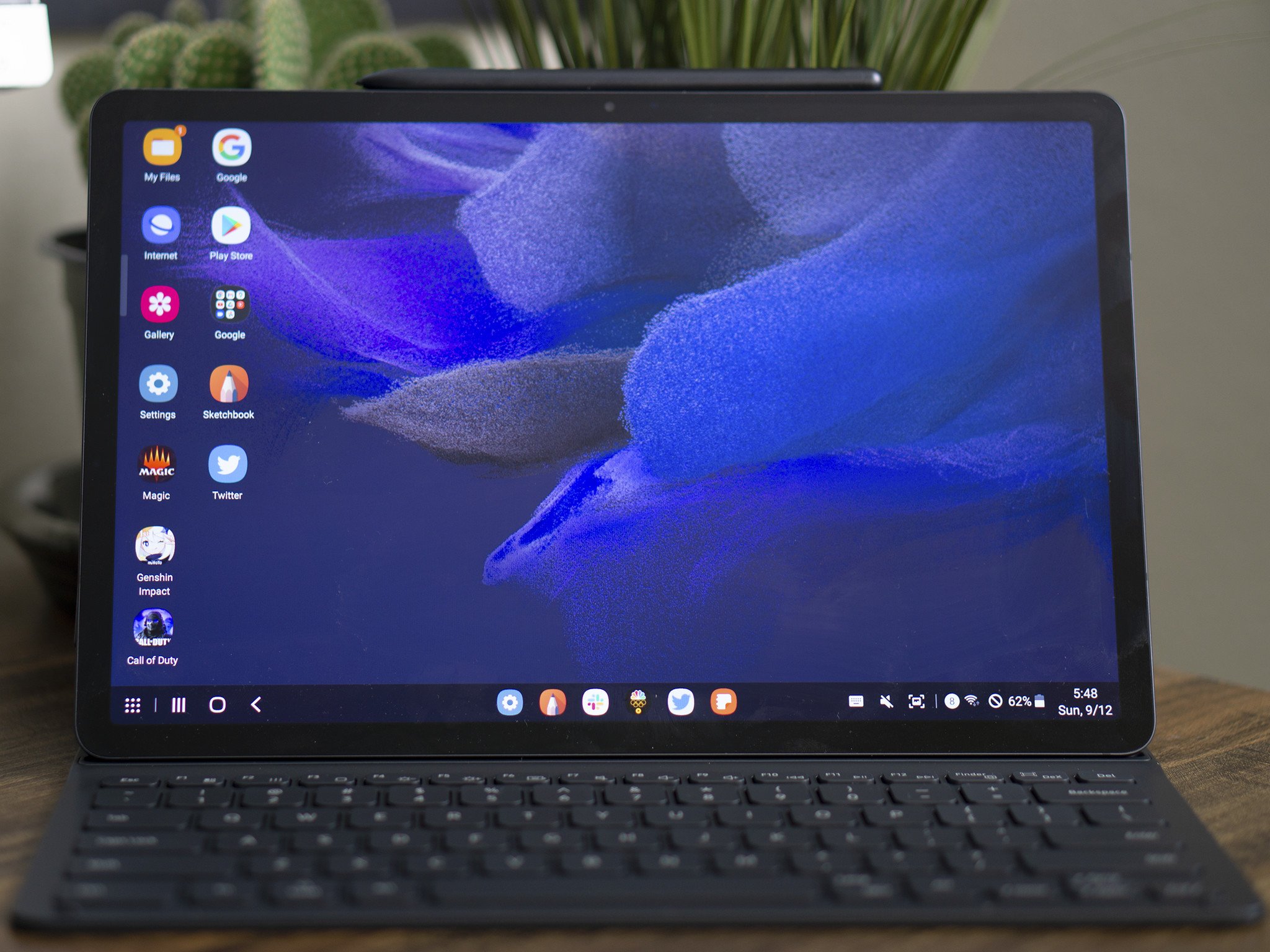A solid mid-range tablet with inflated "FE" expectations.
Samsung's Fan Edition devices are essentially rereleases of popular devices, with slight tweaks and lower prices for loyal fans that can't afford its premium tech. The Galaxy S20 FE was a "flagship killer" that offered similar performance to its S20 at a much lower price. And the S21 FE will (supposedly) downgrade the cameras but keep its processing speed and enlarge the display, battery, and base storage — again, at a lower price.
Put succinctly, Fan Editions are all about finding the right compromises. So which features do you pair back to save money, and which do you improve to attract people's interest? That balance is especially challenging when releasing a Fan Edition of two already-excellent devices: the Galaxy Tab S7 and Galaxy Tab S7 Plus. Both are easily among the best tablets available today, so what improvements do you make to go with the cost-cutting downgrades?
After reviewing the Samsung Galaxy Tab S7 FE, I'll admit that Samsung's spec compromises will be a letdown to its fans. The low base RAM and last-gen Snapdragon make this an S7 Lite, even if Samsung didn't label it that way. It gives you the S7 Plus's massive 12.4-inch display and beast of a battery for a lower price than the S7, which is genuinely awesome for casual use. But when breaking out multiple tabs or DeX mode, it may struggle to keep up, depending on how much RAM you purchase.
Note: Samsung provided me with an AT&T Cellular edition with 4GB RAM for this review.
Samsung Galaxy Tab S7 FE
Bottom line: The Samsung Galaxy Tab S7 Fan Edition gives you a 2560x1600, 12.4-inch display, and a battery that'll truly last all day for heavy use. If you need a cellular version, you'll appreciate the 5G support, but the Wi-Fi version lets you upgrade your RAM and storage, which is arguably more important. This large, stylish tablet is best suited for stationary use.
The Good
- Ample screen for streaming and gaming
- 13-hour battery life with 45W fast charging
- Slightly cheaper than the S7
- S Pen included in the box
- Solid stereo sound
- Supports 5G
The Bad
- 5G models don't offer memory upgrade
- Snapdragon 750G falls well short of S7 chipsets
- Refresh rate stuck at 60Hz
- No fingerprint sensor
- Wimpy cameras
$530 at Amazon $530 at Samsung $530 at Best Buy $530 at B&H Photo
Samsung Galaxy Tab S7 FE: Price and availability
The standard Galaxy Tab S7 FE Wi-Fi edition ships in four colors: Mystic Black, Mystic Silver, Mystic Pink, and Mystic Green. Any color will cost you $530 for the 4GB/64GB version, with price jumps to $600 and $680 for the 6GB/128GB and 8GB/256GB upgrades, respectively. Considering the non-FE Galaxy Tab S7 starts at $699 for a 6GB/128GB baseline, you're really only saving a significant amount on price if you stick with the lowest specs.
The newest innovation to the Fan Edition is its 5G support on the Cellular models instead of the usual LTE. You can buy an AT&T, Verizon, T-Mobile, or USCellular version with 4GB/64GB for $670. Bizarrely, Samsung isn't selling Cellular models with upgraded RAM and storage, so you're stuck at the baseline.
Samsung Galaxy Tab S7 FE: What fans will love
Unless you're a waiter used to holding trays, the Galaxy Tab S7 FE requires two hands (or a kickstand) at all times. For folks who prefer holding a smaller, lighter tablet over their heads in bed, this 12.4-inch slab won't be the best fit. But I enjoy standing it on my desk as a second screen during the day, then propping it on my stomach at night for streaming. I don't mind the extra size and weight because my nearsighted eyes still clearly see the blown-up text and images on-screen, even at a remove.
| Category | Samsung Galaxy Tab S7 FE |
|---|---|
| Operating System | Android 11 |
| Display | 12.4 inches, 16:10 aspect ratio, 2560x1600 resolution, TFT (WQXGA) LCD |
| Processor | Snapdragon 750G |
| Memory | 4/ 6 / 8GB RAM |
| Storage | 64 / 128 / 256GB |
| Expandable Storage | Yes (Up to 1TB) |
| Cameras | 8MP AF (rear) 5MP (front) |
| Security | Face Unlock |
| Battery | 10,090mAh |
| Audio | 2 stereo speakers w/ Dolby Atmos |
| S Pen | Included |
| Dimensions | 7.28 x 11.21 x 0.25 inches |
| Weight | 1.34 lb |
| Colors | Mystic Black, Mystic Silver, Mystic Pink, Mystic Green |
Only slightly heavier than the S7+, the Galaxy Tab S7 FE also has slightly more thickness to it, which arguably could make it slightly easier to grip. The bezel is pleasingly thin and uniform, though depending on how you hold it, your palms may accidentally touch the corners of the display because of that thin bezel. It has an attractive metal finish, stereo speakers on its sides, and a microSD card slot to make up for the wimpy 64GB of base storage.
Samsung sent me a Mystic Black tablet, which — thanks to its shiny metallic finish — tends to get smudged with fingerprints, lint, and other junk fairly quickly. My personal recommendation would be to choose a more colorful option, which will disguise the fingerprints better. At least it looks very snazzy once I wipe it down.
Samsung downgraded the S7 FE speakers from the base S7, which has quad speakers — a definite downside. But I find the S7 FE gets loud enough if you're not using it to blast a soundtrack at a party. My Spotify soundtracks sounded pleasing at max volume with no distortion, which I appreciate because it's too quiet at half volume and below. Bass is satisfyingly punchy, and the range is decent. I'd still say invest in some wireless headphones, but the audio works well enough for non-audiophiles.
You may want to buy the Galaxy Tab S7 FE for its battery alone.
The real perk to the Galaxy Tab S7 FE is its enormous 10,090mAh battery, which Samsung estimates will get you 13 hours of battery life. In my tests, I found the tablet could go a full workday in DeX mode with several apps active or last a couple of days with light use (about four hours of screen time per day). Your experience will vary depending on how much you use cellular data, how often you keep the screen at max brightness, and so on, but Samsung isn't overselling its battery's strengths.
You also get the same 10,090mAh battery with the Galaxy Tab S7+. But that tablet will set you back a few hundred dollars extra. It's nice to get a workhorse like this with a more mid-range price.
Anyone who's used an Android tablet — or a Samsung phone — knows what to expect with the software. Samsung's elongated One UI 3.1 port is familiar and intuitive for Android users. But many app-makers don't bother to optimize their Android apps for tablets, meaning you get weirdly enlarged content or narrow windows surrounded by blank space. While I'm not a fan of this, I'm a newly converted fanboy of Samsung's solution: DeX mode.
For those unfamiliar, Desktop eXperience turns your Galaxy Tab into a mini-computer, with an OS that lets you use Android apps in mini windows on the device. In my week-plus with the Galaxy Tab S7 FE, I've spent most of my working hours in DeX mode. While I focused on writing and research on my laptop, I used my tablet to keep an eye on Twitter and Slack, watch videos (don't tell my boss), and take notes simultaneously.
DeX mode turns the S7 FE into a multitasking machine, while other Android tablets waste the extra space.
Admittedly, DeX Mode and regular One UI mode share a common issue: poor app optimization, which I'll cover in the next section. But even when I can't resize apps the way I want to, I still found ways to jigsaw in three or four apps on the display, simply thanks to the Galaxy Tab S7 FE and its generous size.
The official S7 FE book cover keyboard is expensive but vital to getting the most out of the tablet.
You'll want to invest in a Galaxy Tab S7 FE case to keep this broad slab upright. I purchased the official Galaxy Tab S7 FE book cover keyboard, which mostly worked well. Its keys have excellent travel for a detachable keyboard, and you get teeny function keys for extra shortcuts. You don't get the trackpad of the more expensive S7+ keyboard cover, but Samsung made that cover compatible for the S7 FE, so choose that if you want a laptop-like experience. My solution was to pair my Logitech M720, which I vastly prefer to a trackpad but admittedly only works at my desk.
Your other navigational tool is the complementary S Pen. It has an unobtrusive latency of 9ms, so writing or sketching felt natural. You won't get the gesture controls of the S Pen Pro — which, again, is S7 FE–compatible if you pay extra for one — but the standard stylus works like a charm.
Taken all together, the perks and features of the Galaxy Tab S7 FE add up to something respectable but familiar. No one S7 FE feature can't be found on another Samsung device. It stands as a middle option between its more premium S7 siblings and the much more underpowered Galaxy Tab A series for people who prioritize screen size above everything else.
Samsung Galaxy Tab S7 FE: What fans will dislike
I don't understand why Samsung gave the Galaxy Tab S7 FE the Snapdragon 750G chipset. A 2020 chip designed for affordable 5G, it previously appeared in mid-range smartphones like the OnePlus Nord CE, Samsung Galaxy A52 5G, and Xiaomi Mi 10i. Combined with its base 4GB of RAM, the 750G is a bottleneck to performance.
It's not completely dire. As I already mentioned, I managed to use this tablet in DeX mode across several days, with multiple demanding apps open at once. But I'd often get low memory warning pop-ups and had to carefully curate my open apps with the App Switcher button to keep things manageable.
Hardcore DeX users and tab-happy Chrome users will find 4GB of RAM to be inadequate.
In the standard One UI 3.1 mode, I never had an issue with memory. Animations and navigation are smooth enough that the tablet is a pleasure to use. You just deal with the same little delays you get with any mid-range Android phone: a slow "Android is starting" screen, a half-second delay between tapping a text field and the keyboard appearing, and slower loading for demanding Android games.
I played some popular titles like Genshin Impact and Call of Duty: Mobile on the Galaxy Tab S7 FE, and the 750G can handle them without any real hiccups. I even got COD running on high graphics and frame rates. But Genshin Impact was another story, as turning it up to anything above normal will turn the game into a laggy mess.
For comparison, the Galaxy Tab S7 came with the flagship-ready Snapdragon 865+ and 6GB of RAM, corresponding to snappy performance. However, among the other cost-saving downgrades of the S7 FE versus the S7, the Fan Edition has dual speakers instead of quad, no side fingerprint sensor for biometric unlock, downgraded cameras, and a 60Hz LCD screen instead of a 120Hz AMOLED screen.
If you want an AMOLED display or 120Hz refresh rates for gaming, upgrade to the S7 or S7+.
As I said, the audio is perfectly respectable on the S7 FE, and you can always rely on Face Unlock. I don't know anyone who'd want to take a 12.4-inch tablet out for picture-taking; I do, however, resent the 8MP-to-5MP downgrade of the selfie camera since that's what you'll use for video calls with family.
I predict the display's de-evolution will be the most worrisome to you. So on that note, how much should it matter to you?
Fact is, this is still a 2560x1600 display, with a resolution and pixels per inch that matches most other tablets in this price range, including the S7 and iPad Air 4. Streamed content and games look bright and vivid, and text looks respectably crisp considering the blown-up size of the tablet. Admittedly, I do miss the superior colors and contrast of an AMOLED tablet; no denying that. But if you've never used a 120Hz device before, you won't miss it.
Truly, the limited RAM is the main downside here. Samsung made a bizarre decision to limit the Galaxy Tab S7 FE Cellular tablet to a 4GB/ 64GB configuration, meaning you can't upgrade unless you switch to the Wi-Fi version. The fact is, I don't know why the S7 FE needs 5G unless you truly plan to take it out and about. This isn't a portable device, and the screen brightness isn't built for direct sunlight, so it seems much better suited to home and office use.
I think many of my issues with the throttled S7 FE would be solved if Samsung had sent me a 6GB Wi-Fi version instead, which still costs less than the S7 and gives you more space for multi-tasking. You can even upgrade to 8GB, but if you're looking for that kind of power, you may want to consider a device with a slightly faster chipset too.
My only other issue with the S7 FE has to do with its $160 book cover keyboard. Does Samsung really think someone buying a mid-range tablet wants to spend that much on an accessory?! Plus, I found that the cover's magnetic attachment, while strong and secure, doesn't keep it quite rigid enough when leaning back; this causes a bit of wobble when poking the screen with the S Pen, which can be a bit frustrating.
Samsung Galaxy Tab S7 FE: Competition
When discussing the best Android tablets, the Galaxy Tab S7 and S7 Plus top the list. I've already gone into great detail on how the S7 and S7 FE stack up, but if you have the money, make the S7 Plus your choice if you want a 12.4-inch display and long-lasting battery life. You get the Snapdragon 865+, a lighter frame that's easier to hold for longer, upgraded cameras, an in-display fingerprint sensor (if that appeals to you), and more base RAM for DeX mode.
For mid-range performance, the Galaxy Tab S7 FE is only beaten by devices that cost one or two hundred bucks more, at least.
If you're willing to look outside of Samsung's offerings for a massive, mid-range Android tablet, take a gander at the Lenovo Yoga Tab 13. Its 13-inch display only hits 2160 x 1350 — slightly lower resolution — but it leaves the S7 FE behind in most other spec categories. It has a Snapdragon 870, 8GB of RAM, Wi-Fi 6 support (which the S7 FE lacks), a comparable 10,000mAh battery, and an 8MP selfie camera. On the other hand, it weighs half a pound more, doesn't last as long in battery tests, and makes you pay extra for the stylus.
Even though Android fans will scoff, you can't discount Apple when talking about tablets. The iPad Air (2020) is only slightly more expensive than the Galaxy Tab S7 FE, and it gives you superior performance, an LCD with true tone colors that look excellent, and longer guaranteed software support for iPadOS — which crushes Android's tablet OS for optimization. Then again, this tablet is smaller, has less impressive battery life, and even more expensive accessories. If you want something bigger, the iPad Pro is a superb piece of hardware but costs about twice as much as the S7 FE in exchange.
Samsung Galaxy Tab S7 FE: Should you buy it?
You should buy this if ...
- You want an all-day (or two-day) tablet
- You need a large display with dense resolution for streaming
- The S7/S7+ are too small/expensive for you
- You want 5G on a tablet, for whatever reason
You shouldn't buy this if ...
- You want a compact tablet you can easily hold for hours
- You want a workhorse tablet for a laptop replacement or gaming machine
- You love 120Hz refresh rates on your other devices
What kind of tablet user are you? If you want something affordable for streaming and casual use, a cheap Android tablet will suit you better. If you want a gaming tablet, the S7 FE could fit the bill if you snag more RAM. It could even serve as a mid-range desktop replacement for students, though we'd suggest spending more on superior hardware in that case.
Despite my initial misgivings, the Galaxy Tab S7 FE turned out to be a tablet that performs better than its specs would suggest. Compared to the S7, it does fall short in some ways. Assuming you shell out an extra $70 to get the 6GB/128GB configuration, the Fan Edition will only save you about $50 against the S7 in exchange for significant compromises. But you can't discount that this gets you a 12.4-inch display, making it much more suited for DeX mode multitasking than the 11-inch S7.
This Fan Edition tablet is only for a particular type of Samsung fan. But for that subset of users, I'd argue that the Galaxy Tab S7 FE won't let you down. I'll repeat one last thing for emphasis: ditch the 5G and take the RAM instead. You'll thank me later.
Samsung Galaxy Tab S7 FE
Bottom line: If we weren't comparing it so closely against the Galaxy Tab S7, the Fan Edition would have few downsides. It's an affordable, attractive, and vast tablet that's equally suited for casual streaming and productivity, and it has perks like 45W fast charging, expandable storage, and Dolby Atmos audio. But an older Snapdragon processor and underpowered RAM for the base version may push you to upgrade.
$530 at Amazon $530 at Samsung $530 at Best Buy $530 at B&H Photo
Source: androidcentral
